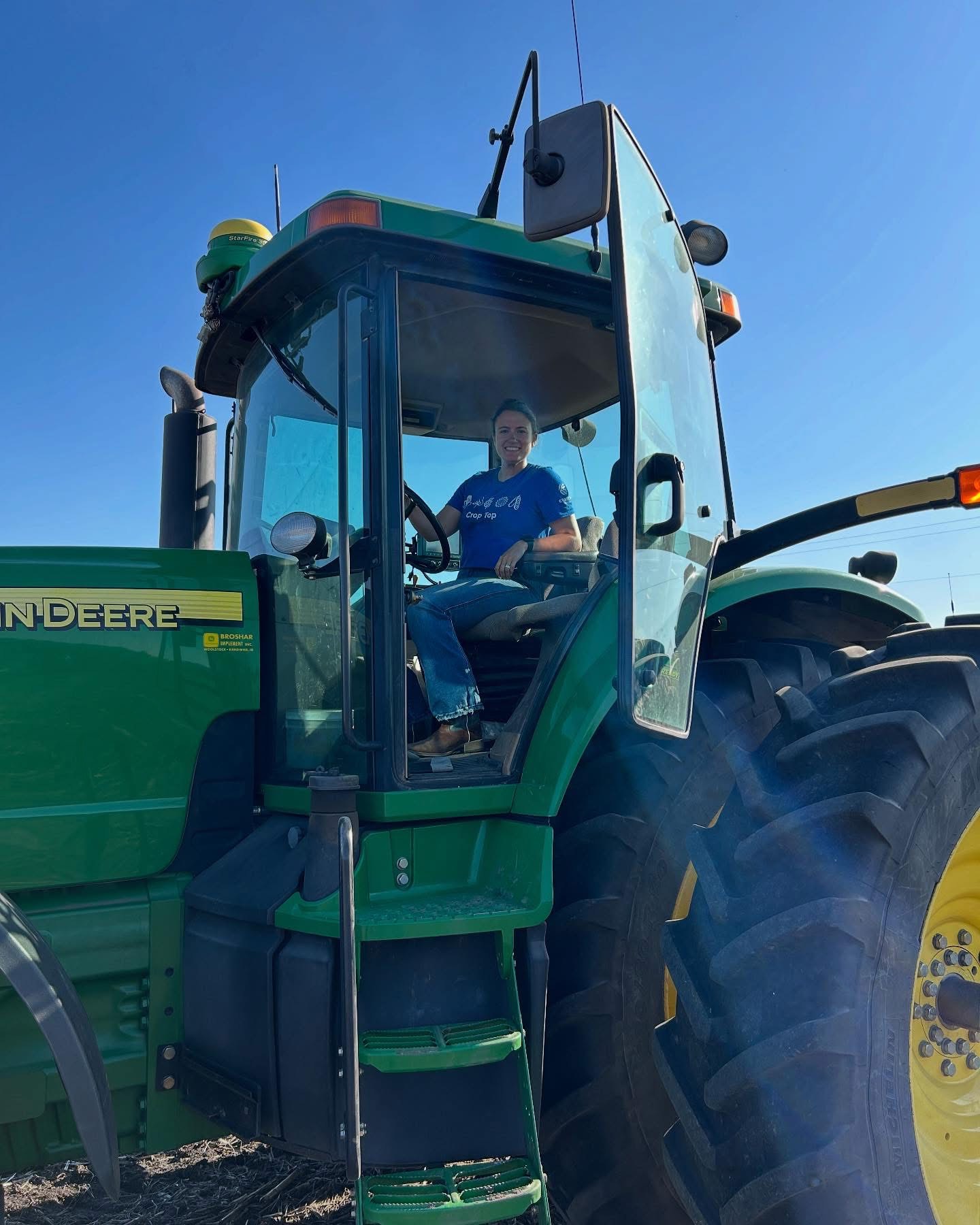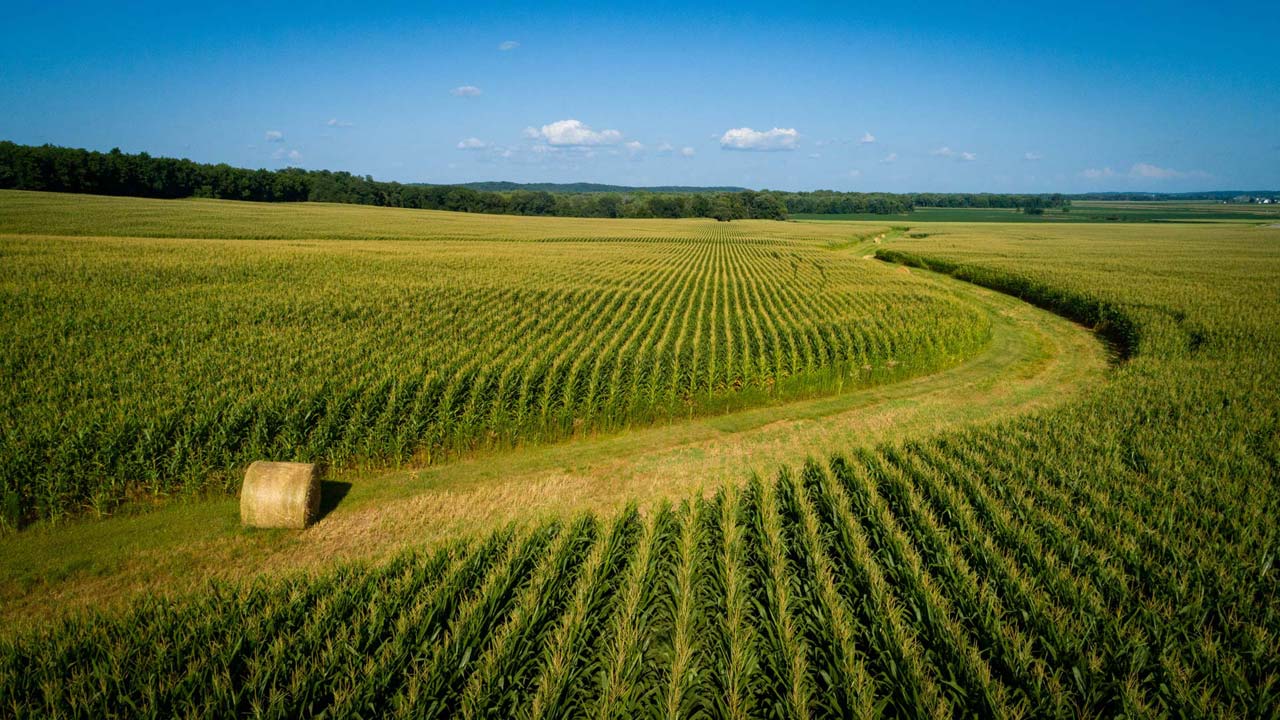2025 June Stewardship Advocate
Cover Crops: A Historical Perspective
Since 2016, the Iowa Corn Promotion Board and the Iowa Soybean Association have invested checkoff dollars to conduct long-term cover crop studies with Iowa farmers. These on-farm trials consist of strips of cover crops and adjacent strips without cover crops. In these studies, we collected data on the cover crop biomass that grew in the strips as well as corn and soybean yields on the strips with and without cover crops. We have compiled data from a total of 128 site-years with 72 site-years of corn and 56 site-years of soybeans. It is the longest running on-farm strip-trial study of cover crops in existence. Several Iowa farmers have had cover crop strips since the first year of the Soil Health Partnership 10 years ago.
From our analysis, we developed two outreach pieces; the first one is a white paper that includes the detailed methodology that was used to plant the trials and an analysis of the results from the strip trials. This white paper will be submitted for publication to a scientific journal. The second deliverable is a farmer-facing grower guide that summarizes key findings from the study that began 10 years ago. Some important takeaways highlighted in the grower guide are: Corn and soybean yields were comparable in strips with and without cover crops. Cover crops reduce soil compaction. Cover crops scavenge excess nitrates at soil depths of at least 24 inches. Timely cover crop termination is a critical part of their management, because higher biomass increases competition with the cash crops, and can impact their yield potential.
The acres of cover crops in Iowa have grown from 50,000 acres in 2010 to 3.8 million acres in 2023. They provide numerous soil health and water quality benefits, but they also may require some new management practices to get established in the fall and terminated in the spring.
Maximizing the soil health benefits of cover crops while minimizing any negative impact on crop yields is a delicate balancing act. This is illustrated by the three levels of cover crop growth shown in Figure 1. It is easy to imagine the sparse growth in the left photo would provide only minor soil health benefits and not compete with the crop while the vigorous growth in the right photo would compete with the succeeding crop. Moderate growth of a cover crop is a happy medium by providing soil health benefits, and if terminated on time, the cover crop is less likely to compete with the cash crop.

Figure 1. Three levels of cover crop growth.
Crop yields varied from year to year, but across 128 site-years, corn and soybean yields with and without cover crops were within two bushels per acre (Figure 2).

Figure 2. Corn and soybean yield were comparable in cover crop strips and strips without cover crops across 72 site-years and 56 site-years, respectively.
Some farmers are being incentivized to grow cover crops through public and private cost share programs, and there are programs that monetize the reduction of crop carbon intensity scores by utilizing cover crops and other conservation practices. The grower guide provides an overview of the long-term cover crop project in Iowa. It points out the benefits of cover crops and the need for additional management when utilizing cover crops to ensure success of the cash crops that follow them.
Look for the Cover Crop Grower Guide in your mailbox at the end of June or request a copy to be mailed by emailing us at corninfo@iowacorn.org.
Latest Information
NCGA Reacts to Senate 45Z Proposal
Secretary Naig Announces Grants for 90 Projects to Improve Consumer Access to E15 in Iowa
Secretary Naig Encourages Farmers to Sign-Up for Iowa’s Cover Crop Cost-Share Program

Farmer to Farmer: Gina White
Gina White farms near Spencer, Iowa with her husband and father-in-law. She has been helping out around the farm for the last six years, but in 2025, she rented her own ground for the first time. They typically plant a corn/soybean rotation but occasionally, as needed, plant corn on corn in some fields.
When it comes to her goals for the farm, profitability is a key component but Gina says, “My main goal is farming sustainably with a keen focus on soil health and water quality. We are only caretakers of the soil for a short amount of time, so I believe it is our duty to take care of it and even make it better to pass onto the next generation.” She also appreciates the family aspect of her farm, saying, “I love being able to farm with my husband and my father-in-law because even though I did not come from a farming background, they are happy to integrate me into the operation.”
On their farms, they typically plant 100 to 104 day maturity corn at a 32,000-35,000 population. They use either chicken or hog manure, depending on the availability with an application of nitrogen with herbicide preplant and an application of Y-drop nitrogen in June. They utilize several conservation practices on their farm. Gina says, “ We use no-till, strip-till and cover crop practices to ensure that there is constantly a living root in the soil to ensure that our soil is the healthiest that it can be.”
When asked about changes to their operation in 2025, Gina states, “The biggest change to our farming operation will be the increased use of irrigation. This will be our first year running a fully-autonomous irrigation system. This opens up many opportunities to study what impacts yield and helps us become much more efficient with how we fertilize our crop. Our fields were also heavily impacted by last year’s devastating flood, so we are looking forward to a better year for our operation.”
When Gina is asked what she would like others to know about their operation, she reflects on her sustainability goals, saying, “We look at improving the economic productivity of the soil by implementing soil health and sustainable farming practices.”
Not surprisingly, Gina is busy off of the farm too. She works as a business administrator for her father-in-law’s farm management company. In her day job, she runs the company’s social media page and takes care of day-to-day accounting needs.
Gina is also active in Iowa Corn, serving on the District 1 Committee and the Animal Ag and Environment Committee. She says, “I did not come from a farming background, so being able to serve on these committees gives me the opportunity to continue to learn about the industry and find innovative ways to improve what we do on our own farm.”
During the past two years, Gina has participated in Iowa Corn’s Leadership Enhancement and Development (I-LEAD) program. She found it to be rewarding, saying, “Not only was I able to improve my leadership skills, but I was able to meet so many others from different backgrounds and aspects of the agricultural industry and learn so much from them. I was also able to see what agriculture looks like in different parts of the United States and internationally with learning experiences in Washington D.C., Seattle and Vietnam and South Korea. It isn’t every day that you can expose yourself to new ways of thinking and different parts of agriculture, so by having these experiences, I am able to broaden my horizons and my way of thinking for the betterment of our farm and our community. I highly recommend this program!”
Events:
July 9: Regenerative Practices in Row Crop Farming Field Day – Indianola; RSVP for free lunch
July 10: 4R+ Summit; Waterloo; RSVP at Field Day Focused on the 4R’s of Nutrient Management

